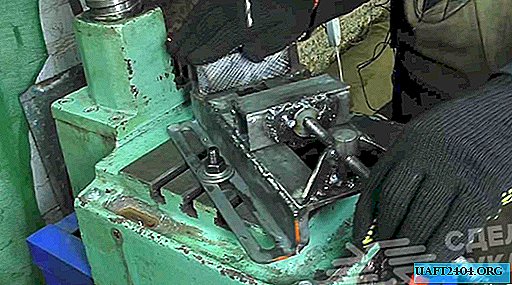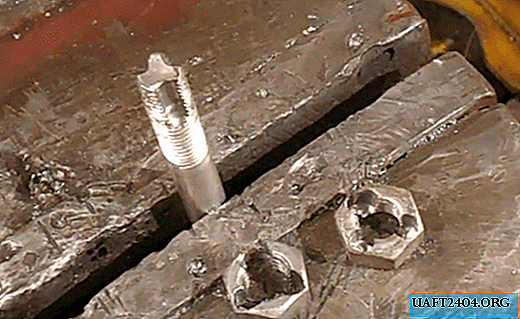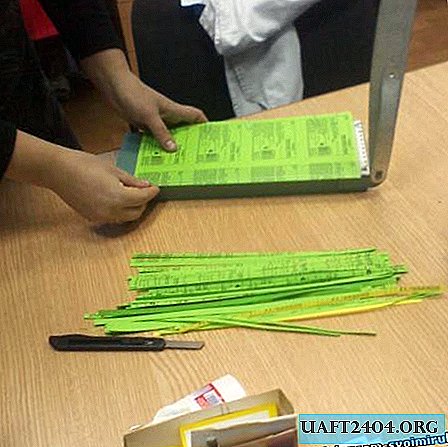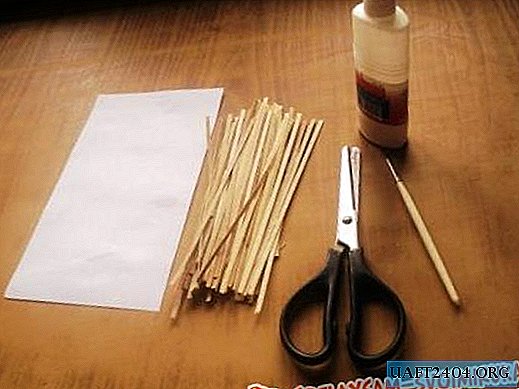Share
Pin
Tweet
Send
Share
Send
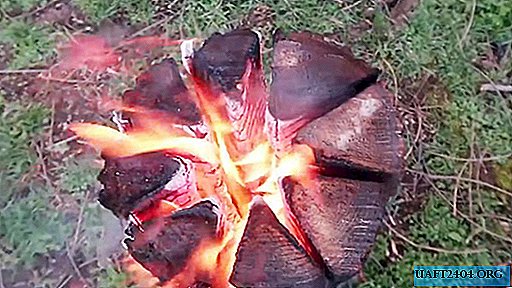
It is a pity to tears, being in the woods among the trees, not being able to make a fire, especially if a cold and hungry night awaits you ahead. Growing trees have high humidity and in order for them to catch fire, a rather significant initial thermal energy is required. And where to get it if there is no dead wood or at least dry grass nearby?
Let's not despair: having some tools and accessories at hand, you can get out of a difficult situation if you know the following 7 rules for making a campfire that have been used by experienced tourists, lumberjacks, hunters, geologists and all who often have to find themselves in the forest away from human habitation .
1. Reliable fire

It’s easy to light a fire with a metal bowl for a bonfire. It is enough to lay logs in the form of a loose lattice of three or more on each of the tiers. This installation will allow air oxygen to enter the combustion front from below and from the sides through the gaps between the tiers and logs in the floors.

From above we lay dry small twigs, pieces of bark, birch bark, paper - everything that is easily kindled.

After some time, the outer layer of the upper logs dries from the primary fire, and the fire passes to them. Gradually, the flame, drying the tiers underneath, will sink lower and lower until the lower row of the grate ignites.

By this time, the bowl will also warm up, which will be an additional source of heat. After that, you can put logs in the bowl and larger.
2. Swedish torch or candle of fire
If there are not completely dry stumps of a tree that is not too thick, then they can be ignited in a way that is subtitled. To do this, we install three stumps of approximately equal length and thickness close to the ground with a small gap (not close to each other), and the top, on the contrary, is pressed tightly against each other.

At the base through the slots we put in the kindling. To make it more convenient to do this, one chock can be temporarily removed, and after the kindling flames up, put it back in place. As the source of the initial fire, you can use, among other things, an old hornet's nest or a dried cone.

Gradually flaring fire will begin to dry deeper layers of wood and the flame will cover an increasingly large area, creating a vertical draft, and sucking in air oxygen through the cracks between the chimneys.

When the stumps of the tree begin to burn steadily, on their upper ends you can put a kettle with water for tea or a pot and cook food.

3. Swedish torch with a chainsaw
For this method, it is necessary to saw off a tree log with a diameter of 25 ± 15 cm and a length of about 40-50 cm, and then make longitudinal cuts 3/4 of the length, dividing the log into 4, 6 or 8 parts.

A vertical hole forms in the middle where you can splash some gasoline, alcohol or pour combustible powder.

We set fire to a flammable substance and, when the fire is sufficiently flared up, we insert dry bends, rods and sticks into the central hole and cracks to give the initial fire more power.

After some time, the log wood will light up from the inside, and the more cuts are made, the faster it will burn and the fire will be stronger. Air leaks into the combustion zone will provide cuts in the log.

It is convenient to boil a kettle on such a fire and cook (heat) food in a pot or pan. The Swedish torch is economical and can be moved from place to place. He is not afraid of wind and even precipitation if you put a stone on top or put dishes with a wide bottom.

4. Fire of two logs all night
To implement this method of making a bonfire, you need an ax, a saw or a hacksaw on a long handle to trim branches and branches at heights. Using one of the last two tools, saw off two logs longer than one meter.

With an ax in two short and not thick logs we cut down in the middle on both sides of the recess.
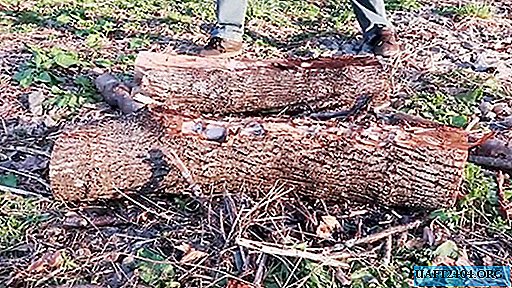
We place them across from above along the edges of the first log laid on the ground. On top of the recesses we lay the second log. Polezka gives stability to the structure and provides a gap between the logs, which is very important in order for the fire to take up quickly and be stable.
We insert thin and dry branches and sticks for ignition into the gap between the logs. But it’s easier and more hopeful to do a little different. For each log, previously in the longitudinal direction in a straight line, you need to slightly “walk” with an ax, inflicting light oblique strokes to increase the burning area at the initial stage.

Next, laying transverse logs along the edges of the lower log, between them we put kindling from dry branches, twigs, bark and birch bark. Press it all down with the second log so that the hewn side is down.

It remains with the help of matches or a lighter to light the kindling in several places on one and the other side, trying to make the fire take up the entire length of the logs. After the kindling burns out and the surfaces of the logs light up, there will be a guaranteed gap between them, which is provided by transverse logs with recesses. Therefore, there will be no lack of oxygen for sustainable burning of logs.

5. Swedish torch without chainsaw
To implement this method, we need a hand saw and a small hatchet to cut the same and not very long logs of relatively dry branches with a diameter of 2 to 7 cm.

We put them together in an arbitrary order, aligning them at the ends, and so that they do not fall apart ahead of time, we intercept them closer to the bottom with thin green willow twigs, using their flexibility.

We install the obtained prefabricated log on any of the ends to the ground, after laying the kindling from below. It only remains to set it on fire and a reliable and convenient fire for cooking or boiling water is provided.

By the way, after cooking, half-burnt logs can be untied, poured with water and used next time.

6. Rocket furnace with a chainsaw
We select or cut from the trunk of a suitable tree with a diameter of up to 40 cm a log about 50 cm high.
We cut it in the longitudinal direction, slightly departing from the center in any direction, by 2/3 of the depth. At this point, we make a transverse cut and cut out part of the log, which we cut into two halves.

Using a chainsaw, we cut off the inner corner of one of the halves. Then in it in the lower part we cut out a small "window". Add parts of the log along the planes of the cuts.


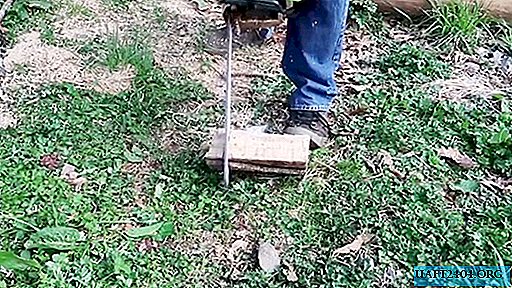
In the "window" we push, the chips formed during the sawing of the log, and ignite it. After a while, the log begins to burn from the inside. Moreover, fire and hot air rush upward along the vertical channel, and new portions of air necessary for combustion come from the surrounding atmosphere through the “window” at the bottom of the log.

After the log is reliably and steadily flared up, you can put a kettle with water on it or a cooking pot for cooking. And in order not to disturb the air exchange inside the log, three flat stones must be put under the dishes on the end of the log, so that there is room for the exit of combustion products and smoke.

This method is also not afraid of wind and rain, when the dishes with a wide bottom are on top.



7. Bonfire all night from three logs
We will need three logs with a diameter of 20-25 cm and a length of at least one meter. Along each log with a chainsaw we make shallow notches crosswise.

We shift on the ground along the length of two logs closely notches upward. We spread on their top a kindling of small branches, twigs, bark, sawdust and set it on fire.

When the kindling flares up, and the lower logs begin to burn, we lay in the middle the third log, notching down. After a while, it also starts to burn.

By the time the kindling is burned out, some of the logs are burned, and a gap is formed between them, through which air from the outside begins to flow, which supports further combustion.

Using the upper log, it is possible to maintain and control the burning force by shifting it in the longitudinal direction with respect to the lower logs, in one direction or another.

Attention! With any method of making a fire, first of all, it is necessary to take comprehensive measures so that this venture does not become a source of forest or steppe fire.
Share
Pin
Tweet
Send
Share
Send

